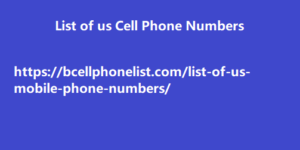folks using it wrong. Let’s explore three common mistakes
and how you can fix them. Mistake 1: Asking it questions it doesn’t have the answer to Believing everything ChatGPT says is never a good idea, but believing answers to questions it doesn’t have data to answer is a recipe for disaster. For example, here’s me asking it for easy-to-rank-for long-tail keywords: Asking ChatGPT for long-tail keywords The results might look okay at first glance, but if you paste them into a keyword research tool like Ahrefs’ Keywords Explorer, you’ll see how bad they are. The search demand for all of them is so low that they’re not even in our database of 16.2 billion keywords: ChatGPT’s long-tail keywords have no search demand Google Trends shows the same thing: ChatGPT’s
long-tail keywords have no search demand…
Google Trends confirms The reason for this is simple: ChatGPT just doesn’t have the data. It has no clue how often things get searched or whether a keyword is “long tail.” Here’s another example of a question ChatGPT doesn’t have the data to answer: ChatGPT can’t tell us the search intent of a topic unless. It doesn’t have the data Once again, we run into a similar problem. To classify intent, you need to actually search for the keyword and analyze the top-ranking pages and SERP features. ChatGPT can’t even browse the web (well, GPT 4 can, but it can’t browse Google results), so it simply cannot do this well.
How to fix this mistake Keep in mind
ChatGPT’s limitations and how it works. If you know it doesn’t have the data to answer a question well, either refrain from asking or give it the data it needs to provide a better answer. For example, if you want it to classify search intent, you need to give it something to go on, like the titles of the top-ranking pages. Only then can it even attempt the task at hand. ChatGPT can classify search intent if we give it
something to go on, like the title’s of top-
ranking pages ARE YOU AN AHREFS List of US Cell Phone Numbers USER? We’ve built a much more robust version of this idea into Keywords Explorer. Just click “Identify intents,” and AI will feed back the results. SERP intent in Ahrefs’ Keywords Explorer Similarly, if you want ChatGPT to find content gaps, you need to feed it the content of both pages and ask it to identify gaps. Or, alternatively, run a content gap analysis in Ahrefs, export
the keyword gaps, and ask it to summarize them
. Mistake 2: prompt ChatGPT rarely gives you exactly what you want on the first try. For example, I recently asked for some technical coffee-related terms to use as seed keywords in Keywords Explorer. Here’s what it gave me: Asking ChatGPT to technical coffee-related terms This isn’t a bad response, but having the descriptions there (which I didn’t ask for) was annoying because it made copying and pasting the list of terms difficult. I faced a similar issue when I asked it to
group keywords into broader categorie
s, and it gave me a Joshua Hardwick Joshua Hardwick Head bulleted list. Refining ChatGPT’s output I didn’t think much of this at first, but I soon realized I needed the results formatted as a table so I could paste them into a Google Sheet and filter them. How to fix this mistake Your first thought might be “prompt engineering” or buying some premium


